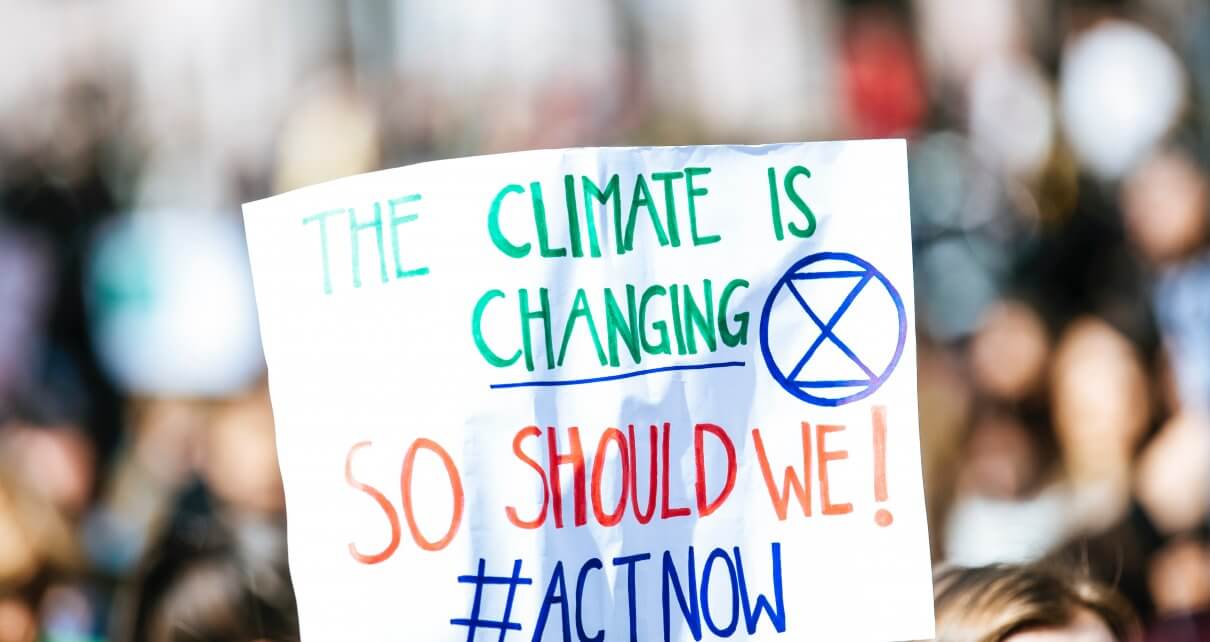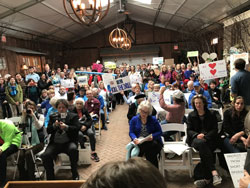Monmouth University hosted a virtual panel discussion as a part of the third annual Climate Crisis Teach-In on Monday, Oct. 4.
Moderated by Heide Estes, Ph.D., Professor of English, the panel discussed what can be done to convince politicians and the general public to do more to combat climate change. Panelists included Stephen Chapman, Ph.D., Associate Professor of Political Science, Marina Vujnovic, Ph.D., Professor of Communication, and Patrick Murray, Professor and Director of the Polling Institute.
The Monmouth University Polling Institute released results from a poll conducted in September about sentiments among Americans regarding climate change shortly before the panel event. The findings were a large topic of conversation throughout the discussion.
“When we started doing more regular national polling back in 2015, this was one of the topics that we said we wanted to keep coming back to and we’ve done that every three years,” said Murray. “It just happened to coincide that we were releasing it this week at the same time as the teach-in here at Monmouth.”
The poll consisted of a national random sample of 802 adults aged 18 and older. Self-reported demographics show that the majority of participants were Independent (41 percent), female (52 percent), over the age of 55 (38 percent), White (63 percent), and did not have a degree (70 percent).
Findings showed that about 3 in 4 Americans, roughly 76 percent, acknowledge that climate change is real. A stark partisan divide was evident, with 94 percent of Democrats and 81 percent of Independents reporting a belief in climate change in contrast to a mere 48 percent of Republicans.
“Back three years ago when we did this survey, 64 percent of Republicans had said that climate change was real. That was notable because it was a jump from about 50 percent who had said it three years prior. I knew that the results that we were seeing with Republican numbers going up were going to change very radically,” explained Murray. “The reason why they were up was because the federal government was engaging in this query and looking at these issues. As soon as that federal climate report was released, then-president Trump basically disparaged the report and I knew it was going to reset us back to zero in terms of where Republicans stood.”
The generation gap was also evident in the poll’s results, which found differences in views of climate change based on age. Two-thirds, or roughly 67 percent, of Americans age 18 to 34 reported seeing climate change as a “very serious” problem, compared to 48 percent of those aged 35 to 54 and 54 percent of adults over the age of 55.
“Over the past 20 years, there has been a big skew in that the younger generation has become much more progressive in their views and they’re sticking that way as they age,” observed Murray.
“While younger generations have zeal, they don’t have power. That’s very unfortunate because we’re running out of time,” commented Vujnovic. “Younger people tend to get attacked for their lack of credibility because they have not lived enough life to know right from wrong, which I completely reject but that’s something that is telling us what’s currently going on in the public sphere.”
“I also noticed that there’s a pretty big gender divide and racial divide,” said Estes. “It seems like it’s mostly the older white men who don’t acknowledge the existence of climate change, and of course they’re the ones with the majority of power.”
“There’s also an education divide within that group too,” added Murray. “If you’re looking at older white men with a college degree versus older white men without a college degree, we’re seeing a significant difference there as well.”
Going beyond the mere existence of climate change, the poll found differences in beliefs about its causes. Just over one third of Americans reported that climate change is caused primarily by human activity, while another 32 percent suggested that both human activity and natural causes are at play.
“Personally I believe that we are focusing too much on individual responsibility when evidence shows that 100 companies are responsible for 71 percent of global emissions since 1988. “Where is the corporate responsibility?” questioned Vujnovic.
“Individual actions matter, but at the end of the day that’s not where the majority of this pollution is coming from. Until you make large scale changes, you’re not going to see individual changes,” explained Chapman.
Public perception of climate change is directly affected by how the information is conveyed. “The media has a lot of work to do to make these climate issues less abstract and more concrete. If we as media professionals explain the ultimate cost of climate change, perhaps people wouldn’t be so split on opinion,” proposed Vujnovic. “It’s a matter of work we need to do in the public sphere to educate people about these issues, and I think the media plays a crucial role in that.”
“Public opinion does tend to impact policy outcomes, but we have to be careful about whose opinion we’re talking about,” explained Chapman. “There’s plenty of evidence of bias representation. If you are part of the wealthy population, your opinion is going to matter more than poor people. When we loop back to this idea that climate change solutions are really going to cost a significant amount of money, the people who are going to be taxed more because of it are the ones who are going to make a lot of noise against it.”
The panel found that although there is no single solution to climate change, there are steps people can take in the right direction. “At the end of the day, it’s about keeping the pressure. One of the main challenges when it comes to climate change is that there isn’t a catch-all policy that’s going to solve it. Coordination with all of these different groups, raising public awareness, and putting pressure on public officials is truly the only thing that’s going to move policy,” concluded Chapman.




